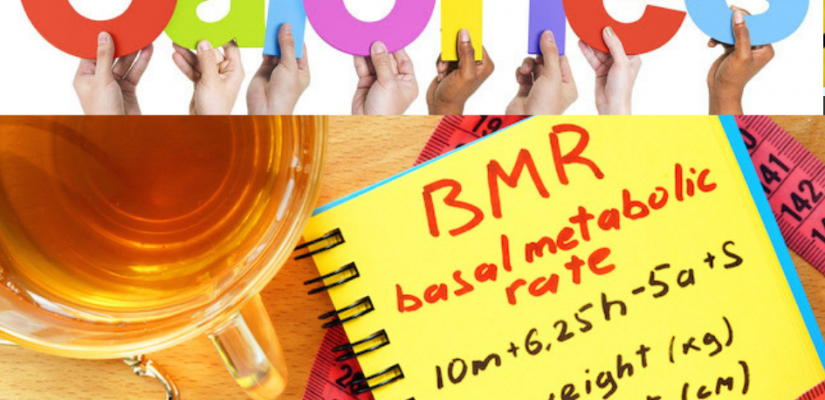
What are Basal Metabolic Rate (BMR) and Resting Metabolic Rate (RMR)
The BMR or Basal metabolic rate is the rate at which a body expends energy per unit time at rest or the number of calories needed to keep a body functioning while at rest. It is related to the essential life-sustaining functions and involuntary processes in the body such as breathing, blood circulation, nutrient processing, cell production, temperature regulation, protein synthesis, brain activity and so on.
The BMR or also called the Basal Energy Expenditure (BEE) is the number of calories your body burns at rest, and any form of physical activity walk, talk, exercise affects the number of calories that your body needs when active.

Resting Metabolic Rate (RMR) is a similar term but not quite the same as BMR, although they are often used interchangeably. The RMR (also called Resting Energy Expenditure or REE also measures the amount of energy a person’s body will burn to maintain its basic functions at rest. However, BMR is slightly more accurate than RMR as it is measured using more restrictive conditions, whereas RMR is measured under looser conditions.
The fundamental difference between BMR and RMR is that BMR precise calculation takes place under rigorous laboratory conditions and must meet total physiological balance whereas RMR conditions of measurement is an assessment of daily energy expenditure under less harsh conditions that can be altered and defined by the contextual limitations. BMR is measured in the elusive “ideal” steady state.
The conditions required for measuring BMR characteristically include stress-free, thermally neutral environment, darkened room, 8-10 hours of sleep, 12 hours of fasting before testing to (make sure that the digestive system is resting) and for the subject to be motionless in a relaxing position. All that suggests the testing to be done at a testing facility as it requires a clinical procedure.
The RMR is an easier and more realistic measurement compared to BMR as it does not require to be conducted in a specific facility, it does not include the 8 hours of sleep and 12 hours fasting restrictions or any particular conditions of the environment such as dark room, concrete temperature, etc.
The calorie estimations for BMR are usually slightly lower than the ones for RMR.
Calculation formula:
- BMR: Harris-Benedict equation
Women: BMR = 655 + ( 4.35 x weight in pounds ) + ( 4.7 x height in inches ) – ( 4.7 x age in years )
Men: BMR = 66 + ( 6.23 x weight in pounds ) + ( 12.7 x height in inches ) – ( 6.8 x age in year )
- RMR: Mifflin-St Jeor equation
(RMR) kcal/day: (males) = 9.99 x weight (kg) + 6.25 x height (cm) – 4.92 x age(years) + 5;
(RMR) kcal/day: (females) = 9.99 x weight (kg) + 6.25 x height (cm) – 4.92 x age (years) – 161.

There are numerous online calorie calculators for BMR as well as RMR which can be useful if you want to calculate and monitor the calories you need to maintain and/or loose/gain weight. Still, you should have in mind, these are just estimations which do not regard physical activity, specific lifestyle, body composition, genetic predispositions and you should not rely on those estimations too much. They are useful guidelines to optimize your diet. Still, you are a unique human being and you should not only consider the calorie calculations but also observe your body with time and adjust your diet and activity for optimal results.
Both measurements use in their formulas variables such as weight, height, age, and gender to calculate the calories of energy expenditure.